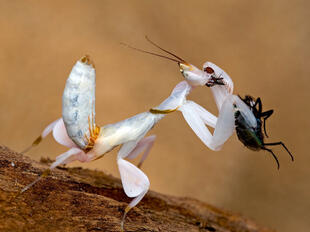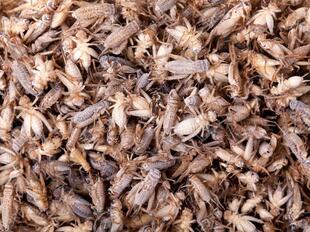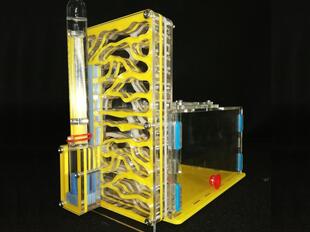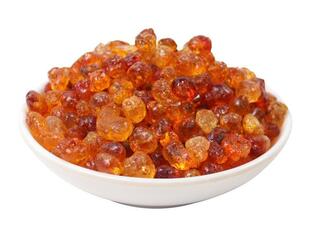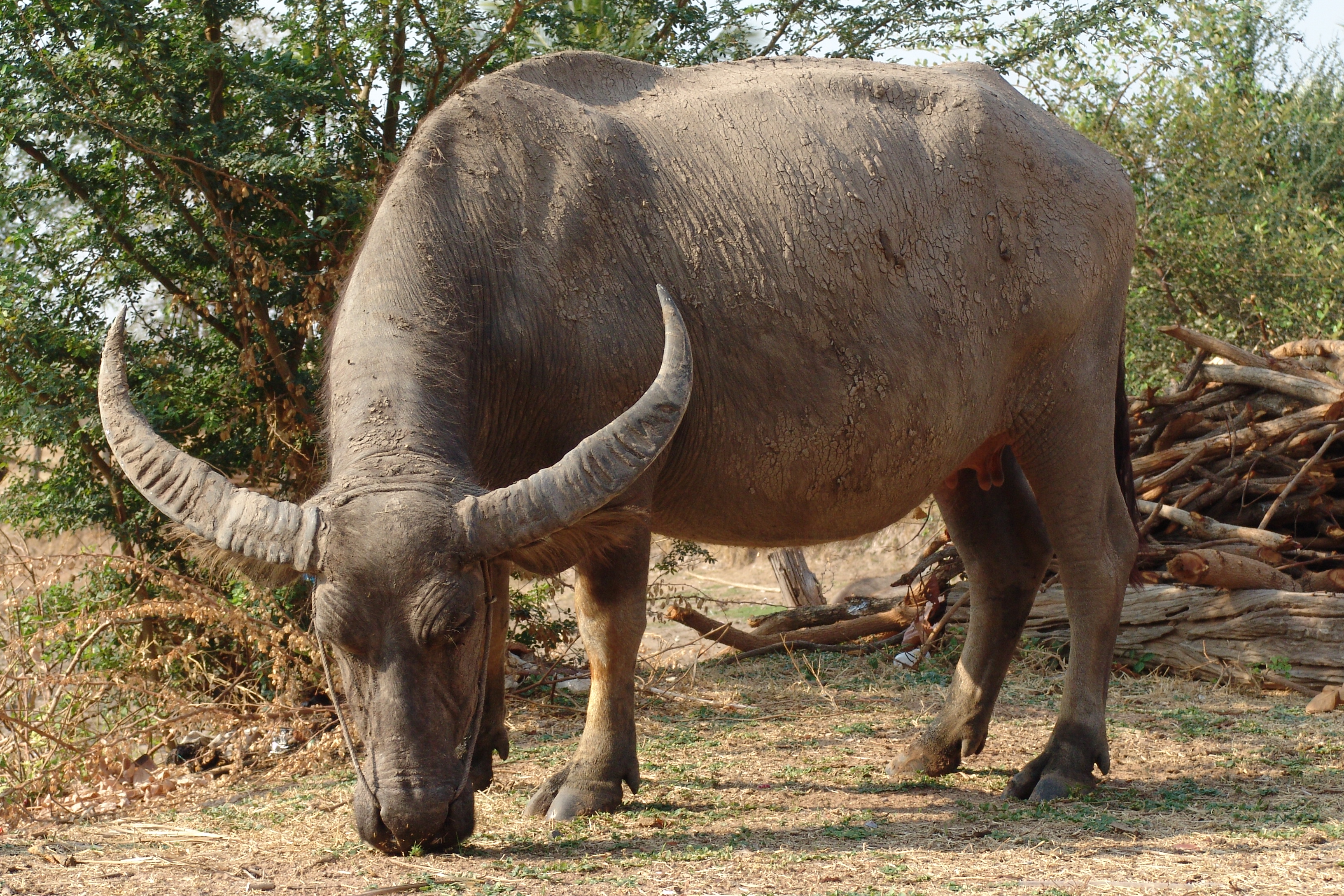
Asian water buffalo(Bubalus bubalis)
Phylum —chordata
Class — mammalia
Order — artiodactyla
Family — bovidae
Genus – bubalus
Appearance
Wild water buffalo are massive and barrel-chested, with rather short legs. Males tend to be much larger than females. Both sexes are slate-gray to black in color, although mature males tend to be very dark. The lower legs are pale, but this can be difficult to discern since water buffalo frequently wallow in mud. One or two white crescents are usually present on the throat or upper chest, and there may also be faint pale markings around the eyes, on the sides of the nose, and by the mouth. The ears tend to droop downwards. Wild water buffalo are reknowned for their incredible scimitar-shaped horns, which may exceed 120 cm in spread. The horns extend sideways from the skull and curve backwards. Horns of males are thicker, but often shorter, than those of females.
Head and body length: 240-280 cm. Shoulder height: 160-190 cm. Tail length: 60-85 cm.
Habitat
Asian water buffalo are now restricted to scattered populations in India, Nepal, Bhutan, and Myanmar.
Behavior
In comparison to their domestic counterparts, little is known about the behavior of Asian water buffalo. They may be active both day and night, but a peak in feeding activity usually occurs in the late afternoon and evening. The day is often spent in forests or near pools, which provide relief from midday heat. Wallowing in mud is a frequent activity, especially in summer, as it provides protection from biting insects; the sweeping horns are sometimes used as shovels to increase mud coverage. This species is dependent on water, and home ranges expand and contract based on its seasonal availability.
Wild water buffalo travel in single-file, with an adult female in the lead, calves in the middle, and the remaining adults bringing up the rear. Buffalo are extremely protective of their young and females will form a protective line in front of the calves when threatened. If the threat persists, they flee into tall grass or forest and not (despite being strong swimmers) into water.
Diet
Buffalo are herbivores, and so eat only vegetation. Their favorite foods are grass and herbs, but water buffalo will also eat aquatic plants.
Reproduction
Conflicting reports suggest that wild water buffalo have either a distinct breeding season, an extended rut up to five months long, or year-round reproduction; this may, in part, be attributed to regional differences. Females typically produce one offspring every two years. At birth, the calves are buff-brown in color. They begin to darken around six months of age; females reach their mature adult coloration at two or three years, while males do not become fully dark until after four years of age. Females typically remain in the herd in which they were born, while males disperse in their third year.
In captivity
The maximum known lifespan is 25 years.
They are kept in large-area pens with houses or sheds to protect them from the sun or rain. The fence is usually a strong metal structure two and a half meters high. Semi-voluntary maintenance involves free grazing on natural or sub-sown pastures. The buffaloes are in need of warm winter when the temperature is +20-25 оС. Keeping the animals closer to the natural conditions, the Asian buffalo is equipped with mud baths in summer, where they can lie for hours chewing gum.
In summer, due to a corral system of keeping and with a fairly diverse feeding of fresh grass and leafy branches, neither concentrates nor vegetables are given to them. In autumn and winter, turnips, carrots, boiled potatoes are added to hay and dry brooms, and oats, bran, and black bread are added to concentrates. Females who have calves up to six months old are given daily concentrates and juicy feeds (in summer, carrots are excluded from the diet).
The animals are in demand of the mineral component from the diet-chalk and salt should be given to them from separate feeders constantly. Periodically animals are offered bone meal, charred tree trunks. For Asian buffaloes, if it is possible, part of the grass food is replaced with brown or red algae, other coastal vegetation. As a mineral component of the diet, they are offered dry kelp.
 Russian
Russian
 English
English




















